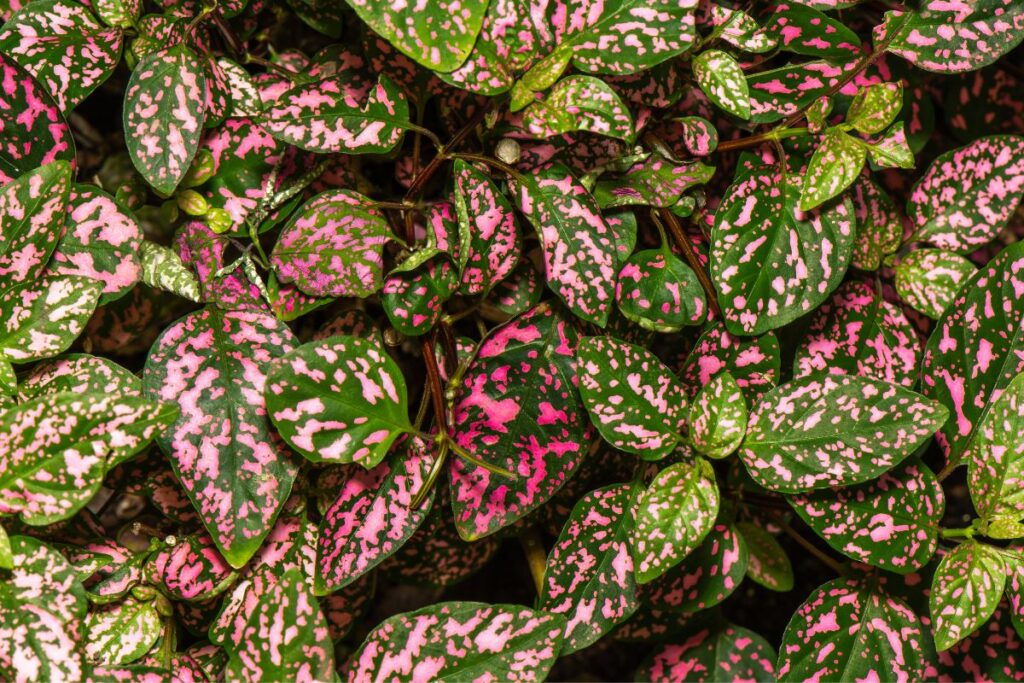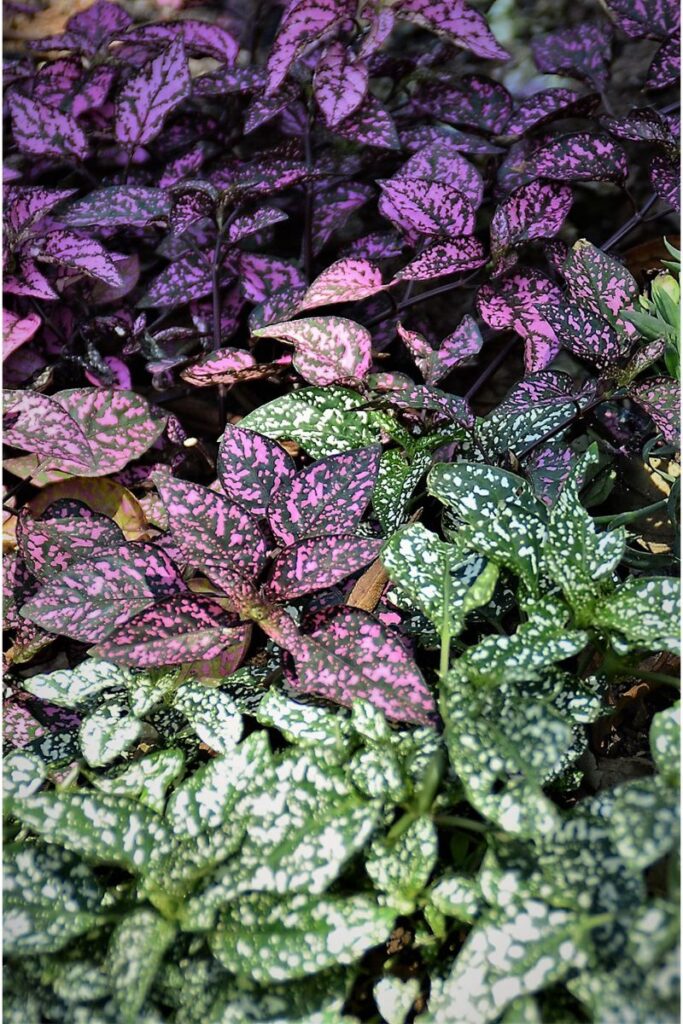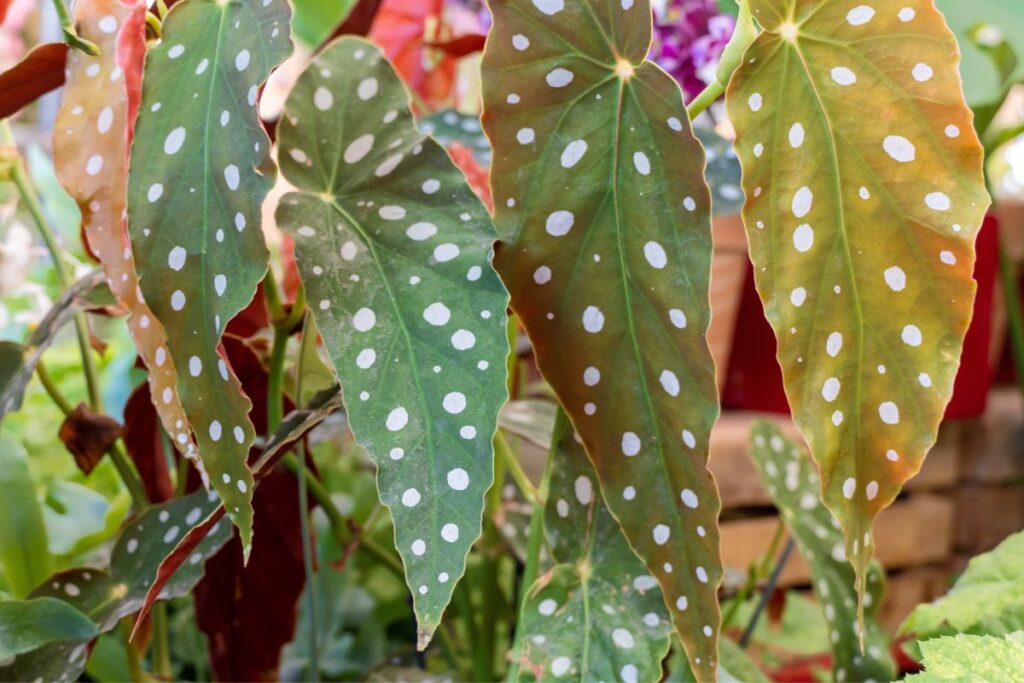Are you worried that the polka dot plant in your home may be poisonous to your cat? It’s important to understand which parts of the plant are toxic and the symptoms of poisoning, so you can keep your feline friend safe. Read on to learn more about this potential hazard.

Contents
Are Polka Dot Plants Toxic To Cats?
Polka Dot plants aren’t toxic to cats, but that doesn’t mean they’re completely harmless. While the occasional nibble of leaves won’t cause any discomfort, consuming large amounts can result in mild vomiting and diarrhea.
To ensure your cat’s safety, it’s best to have alternatives available that are cat-friendly. You can also try training your feline friend to avoid the plant altogether. That way you don’t have to worry about potential health risks or having to remove the plant from your home environment. There are many ways you can enrich their environment with toys and other activities so they don’t get bored and start snacking on Polka Dot plants. If you notice any signs of boredom in your cat, speak to a vet for further advice.
What Parts of the Polka Dot Plant Are Poisonous?
No parts of the polka dot plant are poisonous, so there’s no need to worry about it harming your cats. The lack of potential dangers makes it an ideal choice for those seeking a safe and easy-to-care-for houseplant. Plant care tips include keeping the soil damp but not overwatered and giving it adequate light. For propagation methods, cuttings from the top of an existing plant can be put into fresh soil during the spring and summer months. As long as you follow these general care guidelines, your cats will be safe around this beautiful flowering plant!

What Are the Symptoms of Poisoning?
Ingesting any part of the polka dot plant can lead to symptoms such as nausea, vomiting, and diarrhea in both humans and pets. If you notice that your plants look chewed or if either you or your children experience a rash, itching, or swelling in the mouth or throat after ingesting the plant, seek medical attention immediately. To prevent this from happening:
- Make sure to keep all plants out of reach of children and pets.
- Keep an eye on your pets while they are exploring around plants.
- Educate yourself on common household plants and their toxicity levels.
If ingested by accident, treatment options vary depending on how much was eaten and what stage it was in when ingested (for example, leaves vs flowers). In any case, seeking medical treatment should be done as soon as possible to ensure everyone’s safety.
Keeping Your Cat Safe
To keep your feline safe, it’s important to prevent them from coming into contact with the Polka Dot plant. Keeping your cat out of areas where you’ve placed these plants is key. If you have an indoor kitty, consider putting your Polka Dot plants outdoors or in a space that can be cat-proofed. Making sure your pet is well-fed and entertained can also help deter them from snacking on undesirable items.
Training cats to stay away from the Polka Dot plant is also possible. You can do this the same way you would teach them to resist jumping on countertops or tables – by making it uncomfortable for them when they approach the plant. Consider using deterrents such as double-sided tape, motion detectors, or potted citronella grass to keep cats away from the plants.
While these plants are not toxic if ingested by cats, they may experience mild digestive signs after nibbling on their leaves. Additionally, even if they don’t eat it, cats may still damage the plant while trying to reach it; digging in dirt around it or toppling it over while clawing at its leaves are common occurrences with curious felines. Cat-friendly plants are essential for a safe home environment and training your pet is necessary for the successful cat-proofing of your house!
Polka Dot Plants vs. Polka Dot Begonias

It’s important to know the difference between Hypoestes phyllostachya and Begonia plants, as one can be safely around cats while the other can be dangerous. Polka Dot Plants are non-toxic to cats, but Polka Dot Begonias are highly toxic and even a small amount can cause serious health issues for your pet. Here are a few tips to help you distinguish between these two houseplants:
- Polka Dot Plants have vibrantly colored leaves with patterns that look like dots or freckles.
- Polka Dot Begonias also have polka dot patterns on their leaves, but they contain soluble calcium oxalates which can lead to hypocalcemia or kidney failure.
- When caring for these plants, always wear gloves and try not to get any of the sap on your hands or clothes as it may irritate your skin or cause an allergic reaction.
When it comes to keeping your cat safe, it’s essential that you know how to properly care for all types of houseplants in order to avoid any potential risks associated with certain species. By understanding the differences between Hypoestes phyllostachya and Begonia plants, you’ll be able to provide a safe environment for both you and your cat!
Conclusion
It’s important to keep your cat safe when it comes to polka dot plants. While some parts of the plant are considered poisonous, you can still have one in your home if you take the proper precautions. Make sure to check with your vet before bringing a polka dot plant into your home and be aware of any signs of poisoning in your cat. With a bit of care, you and your pet can enjoy the beauty of a polka dot plant without any risk.
